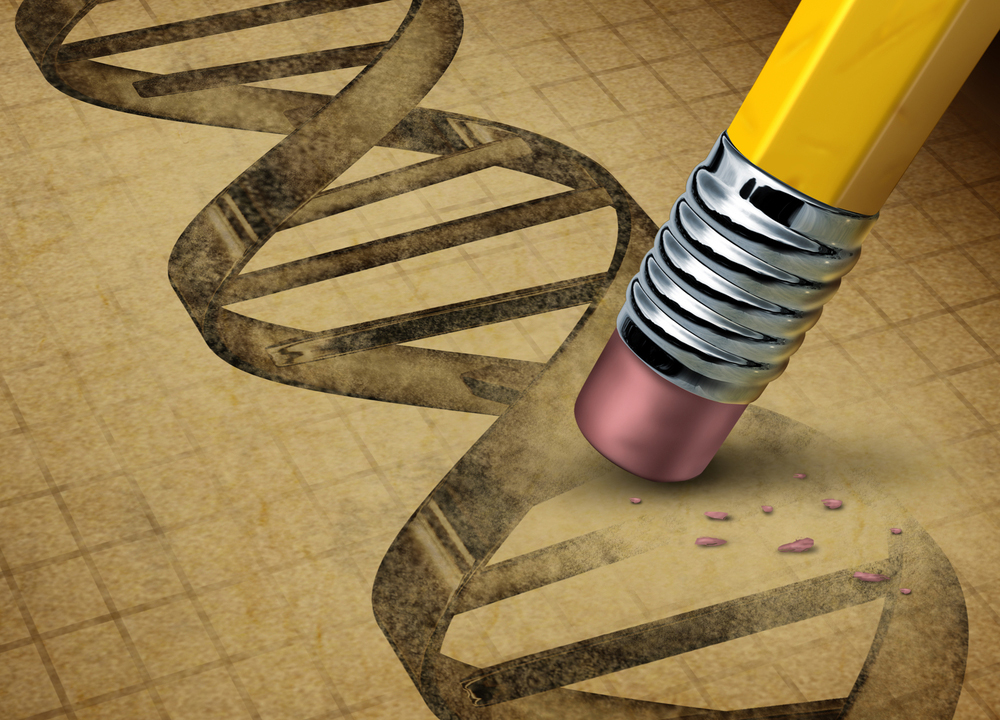CRISPR
Clustered regularly interspaced short palindromic repeats
Methods such as zinc finger nucleases (ZFNs) and transcription activator-like effector nucleases (TALENs) have dramatically improved the ability to precisely edit genes. CRISPR (clustered regularly interspaced short palindromic repeats)/Cas9 (CRISPR associated genes) technology allows for specific targeting of genomic sites in virtually any organism.

CRISPR (Clustered Regularly Interspaced Short Palindromic Repeats) are segments of prokaryotic DNA responsible for adaptive immunity. CRISPR contains short repetitions of base sequences, each followed by a short segment of ‘spacer DNA’ acquired from previous exposure to a bacterial virus or plasmid. A set of genes associated with CRISPR repeats and was named cas (CRISPR associated genes). Cas genes encode putative nuclease or helicase proteins – enzymes that can cut or unwind DNA.
CRISPR was first shown to work as a genome editing tool in human cell culture in 2012. It has since been used in a wide range of organisms including mosquitos (engineering resistance to malaria), zebrafish, fruit flies, nematodes, mice and monkeys. Since CRISPR can be adapted to almost any genomic target via altering only the crRNA targeting component, it has quickly become one of the most popular approaches for genome editing.
CRISPR consists of two components: a guide RNA (gRNA) and a non-specific CRISPR-associated endonuclease (cas9). The gRNA is composed of a crRNA (CRISPR RNA) which is a targeting sequence of ∼20 nucleotides and a tracrRNA (trans-activating crRNA) sequence necessary to bind with cas9. The tracrRNA binds with the Cas9 protein, resulting in a complex that will bind to DNA matching the crRNA target sequence.
To successfully bind to a target DNA sequence the target must have a PAM (protospacer adjacent motif) adjacent to the target. Originally this would have prevented the CRISPR adaptive immune response from cutting the bacterial genome, as the CRISPR locus would not contain the PAM sequence. Commonly, the Cas9 nuclease of Streptococcus pyogenes (SpCas9) is used, which has the sequence 5’-NGG-3’. Cas9 proteins from different bacteria have different PAM sequences.
CRISPR can be used to generate knockouts, make precise gene edits or activate/repress target genes:
Knockouts
 |
A single gRNA and Cas9 protein can be combined, which will then bind to any target sequence that matches the crRNA that is immediately upstream of a PAM sequence. Once the Cas9-gRNA complex binds to a DNA target, a sequence at the 3’ end of the gRNA targeting sequence begins to anneal to the target DNA. If both sequences match then the gRNA will continue to anneal to the target DNA in a 3’ to 5’ direction. This ‘zipper-like’ annealing mechanic may explain why mismatches at the 3’ end of the sequence result in no target cleavage, while mismatches towards to 5’ end can.
Upon binding a target DNA Cas9 undergoes a conformational change that positions the two functional endonuclease domains (RuvC and HNH) to cleave opposite strands of the target DNA. The end result is a double strand break (DSB) 3-4 nucleotides upstream of the PAM sequence.
This break is then most likely to be repaired via the Non-Homologous End Joining (NHEJ) pathway, which frequently results in small nucleotide insertions and deletions (InDels) at the DSB site. Since this is a rather random process, the strength of a knockout for a given mutant cell is ultimately determined by the amount of residual gene function.
Precise Gene Edits
While NHEJ-mediated repair is imperfect, Homology Directed Repair (HDR) can be used to generate specific nucleotide changes, or gene edits. In order to utilise HDR, a DNA repair template containing the desired sequence must be delivered into the cell of interest with the gRNA and Cas9.

The repair template contains information for the desired edit in addition to homologous sequence immediately upstream and downstream of the target (left and right homology arms). The repair template lacks the PAM sequence so that it is not targeted by Cas9.
Due to the generally low efficiency (<10%) of HDR, methods such as enhancing HDR by synchronising cells within the cell cycle stage when it is most active or by chemically or genetically inhibiting genes involved in NHEJ are often used. Since the efficiency of Cas9 is high and HDR low, the resulting modified population will contain some combination of wild-type alleles, NHEJ-repaired alleles and/or the desired HDR-edited allele. Therefore, it is important to confirm the presence of the desired edit experimentally, such as by adding an easily recognisable physical change in the repair template (such as giving mosquitoes glowing eyes).
Activating/Repressing Target Genes
Since the DNA binding and the endonuclease domains are independent, Cas9 can be modified such that the RuvC and HNH nuclease domains are rendered inactive (by point mutations D10A and H840A in SpCas9), making dCas9 (nuclease dead Cas9).
dCas9 can be tagged with transcriptional repressors or activators, with targeting of these dCas9 fusion proteins to the promoter region resulting in robust transcription repression or activation of downstream target genes.
The simplest dCas9-based activators/repressors consist of dCas9 fused directly to a single transcriptional factor, A, or transcriptional repressor, R. Unlike the genome modifications induced by Cas9, dCas9 gene activation or repression is reversible since there is no permanent modification of the genomic DNA.
